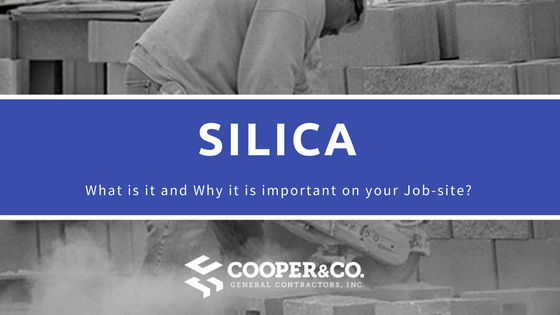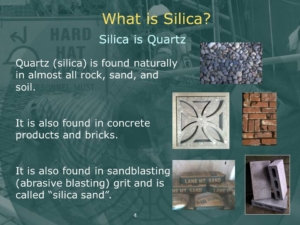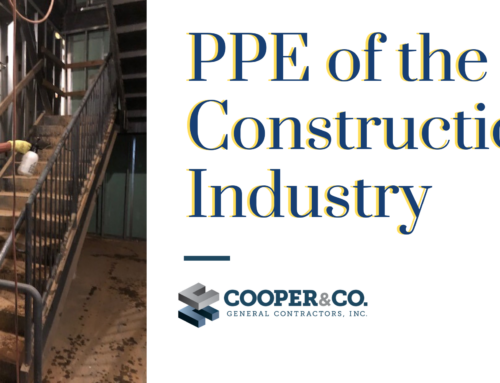The Occupational Safety and Health Administration (OSHA) introduced new silica standards for the construction industry at the end of 2017. For those in the industry, Silica has been a popular term for a while now. Yet many people outside the industry may not have any idea what it is or why it’s important.
What is Silica?
Crystalline silica is defined as very small particles that are 100 times smaller than ordinary sand made up of materials like sand, stone, concrete, and mortar. Silica is also used to make products such as glass, pottery, ceramics, bricks, and artificial stone. This is a common mineral found in the earth’s crust.
OSHA is focused on respirable crystalline silica dust that is created when cutting, sawing, grinding, drilling, and crushing stone, rock, concrete, brick, block, and mortar. It can be generated in activities such as abrasive blasting with sand; sawing brick or concrete; sanding or drilling into concrete walls; grinding mortar; manufacturing brick, concrete blocks, stone countertops, or ceramic products; and cutting or crushing stone.
When these common construction related activities happen it results in worker exposures to respirable crystalline silica dust. It is estimated that about 2.3 million people in the U.S. are exposed to silica at work. In order to protect the workforce, OSHA has set new stricter standards for how much of that type of dust workers inhale and the tradespeople working around such activities.
Why does this Matter?
Inhaling silica dust has been shown to lead to a medical condition called silicosis which is an incurable lung disease that can be fatal if severe enough. In addition, too much silica exposure can also result in developing lung cancer, kidney disease, and chronic obstructive pulmonary disease. That is why it is important to Cooper and Company that we protect the health of our employees and help to be aware of the safety of our subcontractors.
Safety & Training
Cooper & Company makes safety a priority in all our activities. In fact, safety has been one of our four pillars of success for over half a decade. So, implementing new Silica safety standards and training became a priority for us over the past year. Our safety team made sure to update our safety plans to include a written silica exposure control plan and make sure that our onsite superintendents were well versed in the new OSHA guidelines. We are proud to say that all of our superintendents have received their OSHA silica certification training. Each person on our team has now adjusted our daily routines to maximize control of silica dust and works with our subcontractors on our jobsites to make sure we are communicating the importance of their employees working within these guidelines as well.
How this benefits Owners & Clients
For project owners and developers, these new rules should result in even safer jobsites when paired with a contractor who is complying with the new standards. Reduction in dust from construction activities creates a better work environment outside the worksite safety rails from an air quality standpoint. To know if your contractor is certified in these new methods, be on the lookout for Silica certifications when reviewing a project team’s experience.







